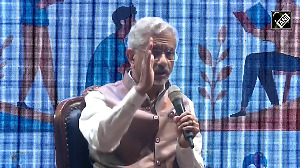It was a tough task for the Congress-NCP alliance to win in Maharashtra, battling odds like anti-incumbency, an upbeat
Shiv Sena-Bharatiya Janata Party and a host of other rivals, including Mayawati's Bahujan Samaj Party and Samajwadi Party.
| |||||||||||
This is despite both the Congress and NCP losing vote share in the region compared to 1999, when the two parties had contested separately, soon after Sharad Pawar parted ways on the issue of Sonia Gandhi's foreign origins.
The story of 2004, however, is that despite the hype, the BSP could not make any serious inroads into the Vidarbha region, which has a sizeable Dalit population.
The fate of Mulayam Singh Yadav's Samajwadi Party and Ramvilas Paswan's Lok Janashakti Party was no different.
The results show that split between the Congress-NCP, Shiv Sena-BJP, and their rebels, there were hardly any votes left for fringe parties.
In Western Maharashtra, the area of dominance for the NCP and Congress, the rebels cornered as many as 10 seats.
While the opposition combine failed to consolidate its position in Western Maharashtra, it also lost its predominance in Konkan and Mumbai.
The only consolation was that the combine managed to hold on to its 1999 position in Marathwada, the region from where BJP state party chief Gopinath Munde hails from.
In northern Maharashtra too, the BJP-Shiv Sena conceded some space to the Congress-NCP.
The Congress-NCP's strategy to align with various factions of the Republican Party of India, their traditional partners, appears to have helped the ruling alliance but not the RPI.






 © 2025
© 2025